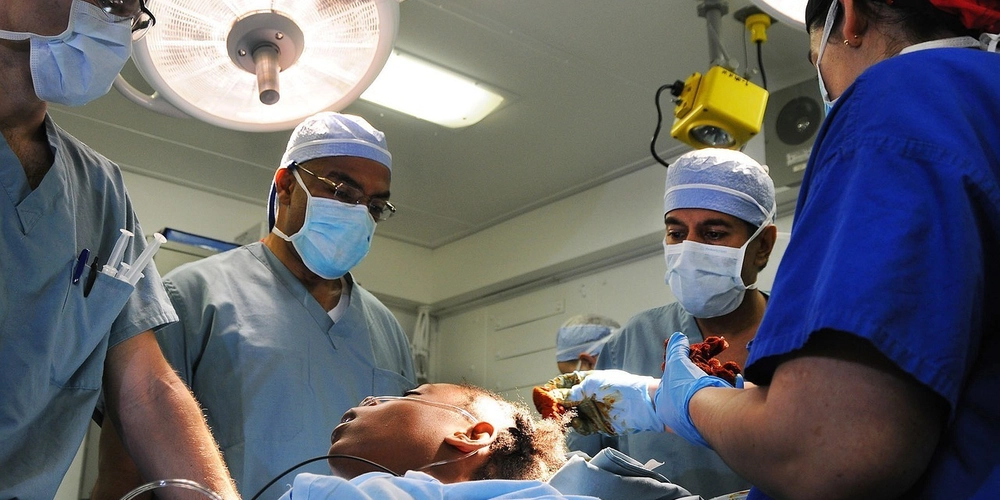Cosmetic vs. Functional Goals: Preparing for Diverse Rhinoplasty Outcomes with Plastic Surgeons including Dr Reish
Rhinoplasty, commonly known as a nose job, is a popular surgical procedure that can enhance facial aesthetics or improve nasal function. Patients seek rhinoplasty for various reasons, ranging from cosmetic desires to medical necessities. Understanding the distinct goals—cosmetic versus functional—is vital for individuals considering this surgery. Proper preparation can significantly influence the surgery's outcomes, ensuring that patients have realistic expectations and achieve their desired results. Preparing for rhinoplasty involves more than just choosing a surgeon; it requires careful consideration of personal goals, physical health, and emotional readiness. Engaging in thorough discussions with a qualified surgeon like Dr Reish can help clarify the desired outcomes, whether they pertain to enhancing one’s appearance or addressing breathing difficulties. This blog explores essential steps in preparing for rhinoplasty, focusing on the diverse outcomes associated with cosmetic and functional goals. Defining Your Goals Before undergoing rhinoplasty, it is crucial to define clear, specific goals for the procedure. Patients should distinguish between cosmetic and functional objectives. Cosmetic goals often involve enhancing the nose's shape, size, or overall appearance to achieve better facial harmony. Patients may desire a straighter nose, refined nasal tip, or reduced width. These aesthetic aspirations are personal and can vary widely among individuals. On the other hand, functional goals focus on improving nasal breathing and correcting structural issues such as a deviated septum or nasal obstructions. It is essential for patients to communicate their motivations to the surgeon during consultations. This clarity enables plastic surgeons such as Dr Reish to devise a tailored surgical plan that aligns with the patient’s expectations and addresses any functional concerns. Choosing the Right Surgeon Selecting the right surgeon is paramount in achieving desired outcomes from rhinoplasty. It is essential to conduct thorough research to identify board-certified surgeons like Dr Reish. Evaluating their experience, training, and patient reviews can provide valuable insights into their expertise and results. Patients should also review before-and-after photos of previous patients to gauge the surgeon's style and outcomes. Moreover, an initial consultation with potential surgeons can help assess their approach and ensure that patients feel comfortable and confident in their skills. During this meeting, patients should ask pertinent questions about the procedure, recovery, and what to expect regarding aesthetic and functional outcomes. A good surgeon will take the time to address concerns, explain surgical techniques, and discuss potential risks, fostering an open dialogue to build trust and confidence. Pre-Surgical Evaluations Prior to rhinoplasty, patients must undergo comprehensive pre-surgical evaluations to ensure they are physically and mentally prepared for the procedure. These evaluations typically involve a thorough medical history review, physical examination, and possibly imaging studies to assess the nasal structure. Discussing any existing medical conditions, medications, or allergies with professionals such as Dr Reish is essential to mitigate potential complications during surgery. Additionally, psychological readiness is an important aspect of preparation. Patients should reflect on their motivations and expectations for the surgery, ensuring they are realistic and achievable. Mental preparation can significantly impact recovery and overall satisfaction with the results. Surgeons may recommend counseling or support groups for patients who express anxiety or unrealistic expectations, ensuring they approach the surgery with a positive mindset. Understanding the Procedure Understanding the rhinoplasty procedure is crucial for setting realistic expectations. Patients should familiarize themselves with the different surgical techniques that may be employed, such as open versus closed rhinoplasty. Open rhinoplasty involves external incisions, allowing for greater visibility and control, while closed rhinoplasty uses internal incisions, resulting in minimal scarring. Each technique has its advantages and is chosen based on the specific goals of the surgery. Patients should also be aware of the time involved in the procedure and recovery. Rhinoplasty typically lasts between one and three hours, depending on the complexity of the case. Additionally, initial swelling and bruising are common post-surgery, and patients should prepare for a recovery period of several weeks. Understanding the surgical process helps patients align their expectations with the reality of recovery, leading to a more satisfactory experience. Post-Operative Care Post-operative care is a critical component of a successful rhinoplasty experience. Patients should discuss specific recovery instructions with their surgeon to en

Rhinoplasty, commonly known as a nose job, is a popular surgical procedure that can enhance facial aesthetics or improve nasal function. Patients seek rhinoplasty for various reasons, ranging from cosmetic desires to medical necessities. Understanding the distinct goals—cosmetic versus functional—is vital for individuals considering this surgery. Proper preparation can significantly influence the surgery's outcomes, ensuring that patients have realistic expectations and achieve their desired results.
Preparing for rhinoplasty involves more than just choosing a surgeon; it requires careful consideration of personal goals, physical health, and emotional readiness. Engaging in thorough discussions with a qualified surgeon like Dr Reish can help clarify the desired outcomes, whether they pertain to enhancing one’s appearance or addressing breathing difficulties. This blog explores essential steps in preparing for rhinoplasty, focusing on the diverse outcomes associated with cosmetic and functional goals.
Defining Your Goals
Before undergoing rhinoplasty, it is crucial to define clear, specific goals for the procedure. Patients should distinguish between cosmetic and functional objectives. Cosmetic goals often involve enhancing the nose's shape, size, or overall appearance to achieve better facial harmony. Patients may desire a straighter nose, refined nasal tip, or reduced width. These aesthetic aspirations are personal and can vary widely among individuals.
On the other hand, functional goals focus on improving nasal breathing and correcting structural issues such as a deviated septum or nasal obstructions. It is essential for patients to communicate their motivations to the surgeon during consultations. This clarity enables plastic surgeons such as Dr Reish to devise a tailored surgical plan that aligns with the patient’s expectations and addresses any functional concerns.
Choosing the Right Surgeon
Selecting the right surgeon is paramount in achieving desired outcomes from rhinoplasty. It is essential to conduct thorough research to identify board-certified surgeons like Dr Reish. Evaluating their experience, training, and patient reviews can provide valuable insights into their expertise and results. Patients should also review before-and-after photos of previous patients to gauge the surgeon's style and outcomes.
Moreover, an initial consultation with potential surgeons can help assess their approach and ensure that patients feel comfortable and confident in their skills. During this meeting, patients should ask pertinent questions about the procedure, recovery, and what to expect regarding aesthetic and functional outcomes. A good surgeon will take the time to address concerns, explain surgical techniques, and discuss potential risks, fostering an open dialogue to build trust and confidence.
Pre-Surgical Evaluations
Prior to rhinoplasty, patients must undergo comprehensive pre-surgical evaluations to ensure they are physically and mentally prepared for the procedure. These evaluations typically involve a thorough medical history review, physical examination, and possibly imaging studies to assess the nasal structure. Discussing any existing medical conditions, medications, or allergies with professionals such as Dr Reish is essential to mitigate potential complications during surgery.
Additionally, psychological readiness is an important aspect of preparation. Patients should reflect on their motivations and expectations for the surgery, ensuring they are realistic and achievable. Mental preparation can significantly impact recovery and overall satisfaction with the results. Surgeons may recommend counseling or support groups for patients who express anxiety or unrealistic expectations, ensuring they approach the surgery with a positive mindset.
Understanding the Procedure
Understanding the rhinoplasty procedure is crucial for setting realistic expectations. Patients should familiarize themselves with the different surgical techniques that may be employed, such as open versus closed rhinoplasty. Open rhinoplasty involves external incisions, allowing for greater visibility and control, while closed rhinoplasty uses internal incisions, resulting in minimal scarring. Each technique has its advantages and is chosen based on the specific goals of the surgery.
Patients should also be aware of the time involved in the procedure and recovery. Rhinoplasty typically lasts between one and three hours, depending on the complexity of the case. Additionally, initial swelling and bruising are common post-surgery, and patients should prepare for a recovery period of several weeks. Understanding the surgical process helps patients align their expectations with the reality of recovery, leading to a more satisfactory experience.
Post-Operative Care
Post-operative care is a critical component of a successful rhinoplasty experience. Patients should discuss specific recovery instructions with their surgeon to ensure proper healing. This may include guidance on managing swelling, pain, and the use of prescribed medications. Patients are often advised to avoid strenuous activities, heavy lifting, or sports for several weeks post-surgery to prevent complications.
Moreover, follow-up appointments are essential for monitoring healing and addressing any concerns. During these visits, plastic surgeons including Dr Reish assess the healing progress, remove any splints or stitches, and provide further instructions for maintaining nasal health. By actively engaging in post-operative care, patients can enhance their recovery and maximize their satisfaction with the final results.
Emotional Readiness and Support
Lastly, emotional readiness plays a significant role in the rhinoplasty experience. Patients should reflect on their motivations and feelings about undergoing surgery. Having realistic expectations and understanding that results may take time to fully manifest can help manage post-surgery emotions.
Support from family and friends is invaluable during this process. Patients are encouraged to involve loved ones in their journey, whether seeking emotional support or practical help during recovery. Open communication about feelings and concerns can ease anxiety and enhance overall satisfaction with the procedure, reinforcing the importance of emotional well-being in the cosmetic surgery experience.
Preparing for rhinoplasty requires careful consideration of both cosmetic and functional goals. By defining specific objectives, selecting a qualified surgeon, and understanding the surgical process, patients can set the stage for successful outcomes. Moreover, engaging in proper pre- and post-operative care, along with fostering emotional readiness, contributes significantly to the overall experience. Rhinoplasty can enhance both appearance and function when approached thoughtfully, paving the way for increased confidence and improved quality of life. Ultimately, understanding the diverse outcomes associated with rhinoplasty enables patients to navigate their journey with clarity and purpose, ensuring they achieve the results they desire.




























![[Webinar] AI Is Already Inside Your SaaS Stack — Learn How to Prevent the Next Silent Breach](https://blogger.googleusercontent.com/img/b/R29vZ2xl/AVvXsEiOWn65wd33dg2uO99NrtKbpYLfcepwOLidQDMls0HXKlA91k6HURluRA4WXgJRAZldEe1VReMQZyyYt1PgnoAn5JPpILsWlXIzmrBSs_TBoyPwO7hZrWouBg2-O3mdeoeSGY-l9_bsZB7vbpKjTSvG93zNytjxgTaMPqo9iq9Z5pGa05CJOs9uXpwHFT4/s1600/ai-cyber.jpg?#)














































































































































![[The AI Show Episode 144]: ChatGPT’s New Memory, Shopify CEO’s Leaked “AI First” Memo, Google Cloud Next Releases, o3 and o4-mini Coming Soon & Llama 4’s Rocky Launch](https://www.marketingaiinstitute.com/hubfs/ep%20144%20cover.png)





































































































































































































![Rogue Company Elite tier list of best characters [April 2025]](https://media.pocketgamer.com/artwork/na-33136-1657102075/rogue-company-ios-android-tier-cover.jpg?#)







































































_Andreas_Prott_Alamy.jpg?width=1280&auto=webp&quality=80&disable=upscale#)





































































































![Apple Watch Series 10 Back On Sale for $299! [Lowest Price Ever]](https://www.iclarified.com/images/news/96657/96657/96657-640.jpg)
![EU Postpones Apple App Store Fines Amid Tariff Negotiations [Report]](https://www.iclarified.com/images/news/97068/97068/97068-640.jpg)
![Apple Slips to Fifth in China's Smartphone Market with 9% Decline [Report]](https://www.iclarified.com/images/news/97065/97065/97065-640.jpg)



































































































































